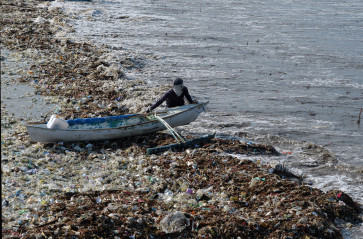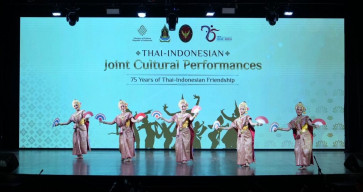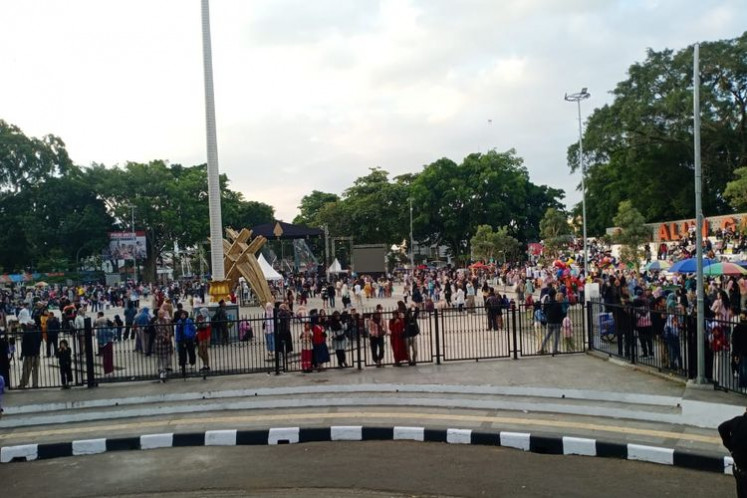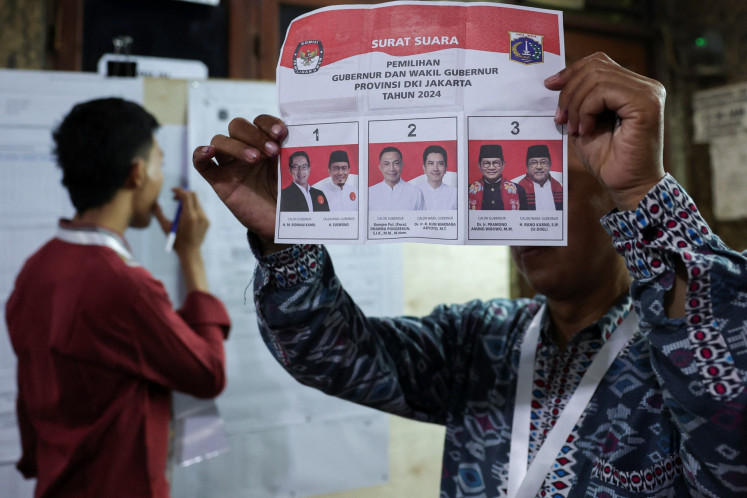Popular Reads
Top Results
Can't find what you're looking for?
View all search resultsPopular Reads
Top Results
Can't find what you're looking for?
View all search resultsMaterial shortage threatens tradition
It is getting harder for Indonesia to be self-supporting in garment production as it becomes more difficult for textile manufacturers and traditional weavers to find domestically produced raw materials such as textile yarns and coloring agents
Change text size
Gift Premium Articles
to Anyone
I
t is getting harder for Indonesia to be self-supporting in garment production as it becomes more difficult for textile manufacturers and traditional weavers to find domestically produced raw materials such as textile yarns and coloring agents.
Instead of using natural dyes, most textile manufacturers in the country would rather use chemical coloring agents even though they are toxic and environmentally unfriendly.
“While textiles are part of Indonesian cultural heritage, it seems that few people have an eye for local textiles although some specific textiles are considered important and increasingly rare pieces of cultural heritage and art which need preservation,” Irma Hutabarat, chairwoman of Miyara Sumatera Foundation, told a discussion on Indonesian cultural heritage recently.
Citing Ulos Sibolang as an example, the traditional blue-colored woven cloth from the ethnic of Batak in North Sumatra, was now getting harder to find, she said. Ulos Sibolang has a very valuable role in the life of Batak communities as they wear this woven fabric in traditional ceremonies to celebrate the joy of life.
“Traditional weavers use only the natural blue dye called ‘indigo’ derived from local plants in their work. It creates not only a vibrant but also a long-lasting blue color,” said Irma.
Blue-colored ulos made by Batak ethnic groups living in Toba have a different shade of blue compared to ulos in other areas such as in Siborong-borong or Tarutung, as they use blue dye derived from a different species of plants.
Local people living in other parts of Sumatra, such as ethnic groups from Palembang in South Sumatra and Minang in West Sumatra, weave their traditional woven cloth called songket by using natural red dyes from the crushed bark of the mangosteen tree. Such naturally colored cloth can last for hundreds of years.
As China’s influence in Indonesia grew along with its textile manufacturing techniques, traditional weavers began to embroider their cloth with bits of gold or silver thread.
“It may be still quite easy for us to find blue-colored ulos or red-colored songket nowadays; but other traditional, naturally colored textiles are getting difficult to find,” said Irma, adding that most textile raw materials, including yarns, were currently imported.
First established in 2010, the Miyara Sumatera Foundation aims to preserve, protect and promote the cultural heritage of Sumatra, including its traditional woven fabrics. “Without proper care, we may not be able to see local wisdom and precious local customs depicted in our traditional woven textiles anymore,” said Irma.
As textiles are part of the cultural heritage needing preservation, the foundation is restoring hundreds of ancient woven fabrics from throughout Sumatra, from Aceh to Lampung.
Tapis Kapal, a traditional woven cloth from Kalianda, Lampung, which died out as a result of colonialism and the explosion of Mount Krakatau in the 19th century is one of the textiles preserved by the foundation. Other fabrics include a Sumatran batik called lokcan from the early 20th century; a Palembang woven-silk cloth called lawon from the 19th century; and a variety of ancient ulos such as Ulos Sibolang, Ulos Ragi Idup, Ulos Ragi Hotang, Ulos Sadum and Ulos Bintang Maratur.
“We are also cultivating several plants known to be sources of natural dyes, including mangrove,” said Irma, adding that the dye-producing mangrove plants were being cultivated in estates in Kalianda.
Muhammad Sartono, chairman of Sahabat Budaya Indonesia, said the using of natural coloring agents in textile production would contribute to preserving local culture.
“Natural dyes make woven cloth not only brighter and more beautiful but also longer lasting, enabling us to preserve our intangible culture through textile manufacturing,” he said, adding that more effort needed to be made by the government to promote natural dyes.
Candrian Attihiyat, head of the Jakarta Conservation Center, said that maintenance played a key role in preserving the Indonesian cultural heritage. “We may save our vanishing heritage only by preserving the existing cultural artifacts,” he said.
Despite the fact that many ancient cultural objects can no longer be found, it doesn’t mean that the culture is totally extinct, however.
“We can still preserve cultural traditions and values depicted in the artefacts by, for example, examining the particular pattern in which a traditional textile was woven and understanding what it reflects,” said Candrian.










